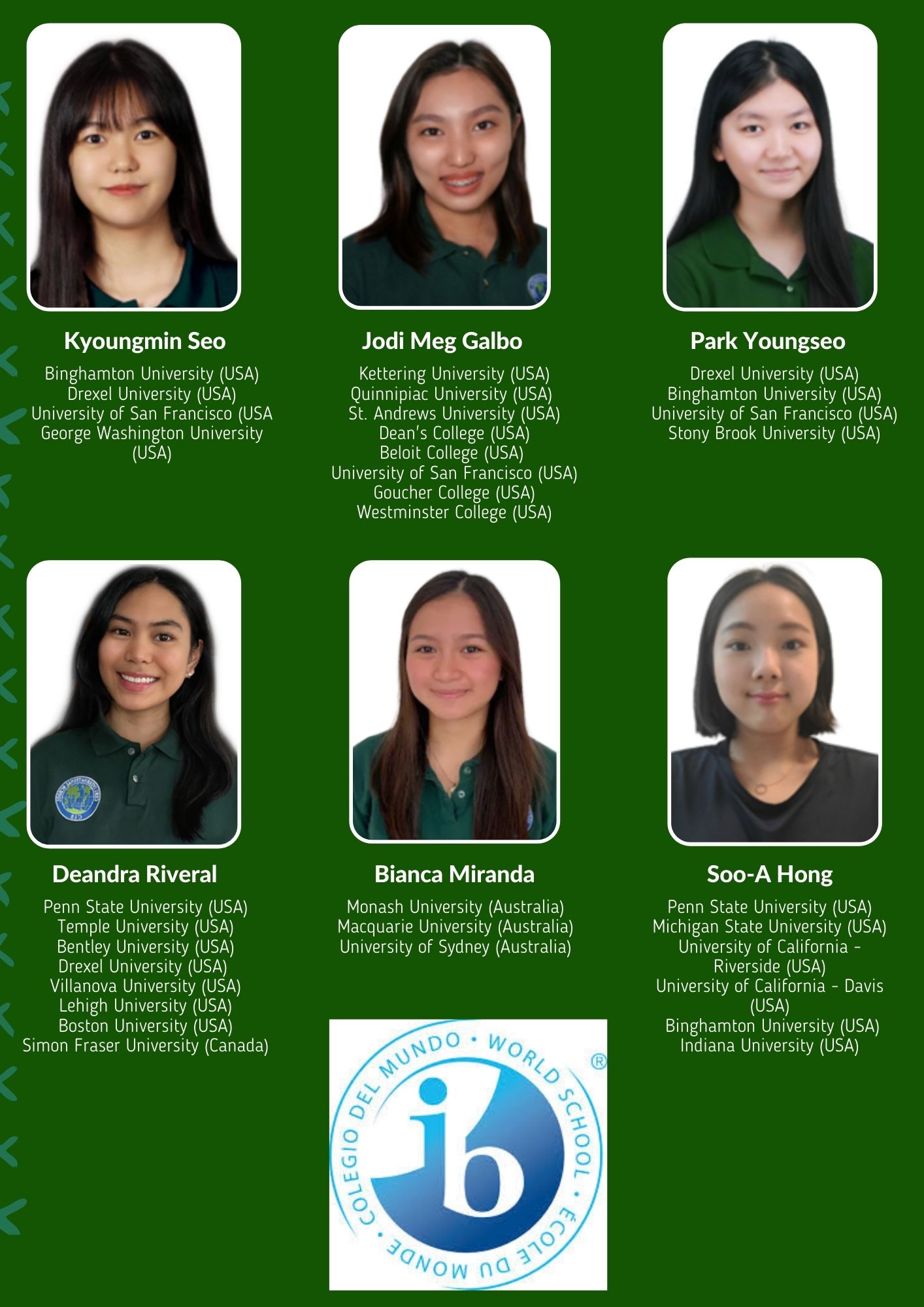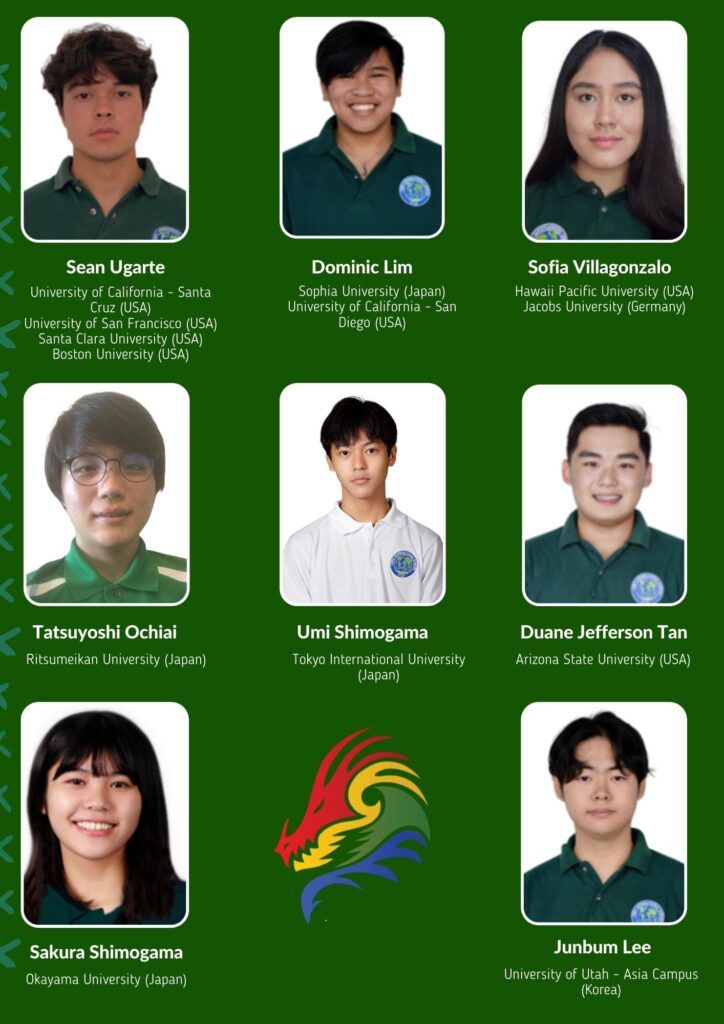
Admin News
by Dr. Gwyn Underwood, Superintendent
It has been another extremely busy week as we moved from our successful two-week half-day on-campus transition schedule to our full-day new normal regular schedule. Despite a number of adjustments needed to address the various issues arising from two years being off-campus, overall things went smoothly, which is a huge credit to everyone in so many ways – from students, parents, and family, to teachers, staff, and fellow administrators. Thank you all for your individual contributions to the CIS community!
 Constant pressure is tiring at the best of times and can be overwhelming at others. Over the past two years, we have been living through societal changes on multiple fronts, and we know change can be a major source of stress. As we were planning our return to campus, one of our objectives was to seek a quick return to learning routines that will enable us to create a safe learning environment that can also be a haven for our students from the various unsettling global changes we are experiencing at this time, such as climate change, war, the social media and big tech revolution, and so on. Our “anchor” through all this are our guiding statements. Two, in particular, are relevant to this topic:
Constant pressure is tiring at the best of times and can be overwhelming at others. Over the past two years, we have been living through societal changes on multiple fronts, and we know change can be a major source of stress. As we were planning our return to campus, one of our objectives was to seek a quick return to learning routines that will enable us to create a safe learning environment that can also be a haven for our students from the various unsettling global changes we are experiencing at this time, such as climate change, war, the social media and big tech revolution, and so on. Our “anchor” through all this are our guiding statements. Two, in particular, are relevant to this topic:
- Core Belief #1: Learning is a joyful, creative, and open-ended exploration.
⇒ Instead of worrying too much, let us recall the joy of learning, and seek ways to nurture our students, and our own, creativity and open-ended exploration. - Core Belief #6: As an IB World School, the Learner Profile Attributes and Approaches to Learning are embedded in all that we think, say, and do.
⇒ Focusing on positive LP attributes such as being caring and open-minded, and consciously seeking ways to develop our approaches to learning (ATL) skills will enable us to better cope with the challenges of life, and help to build our resilience.
Speaking of resilience, it is reassuring to read that “a growing body of research illustrates that academic buoyancy and resilience support students’ healthy acceptance of and response to challenges in and out of school.” Anderson et. al* notes that “resilient learners have meaningful goals, manage their emotions when they experience setbacks, and accept what they can and cannot control in the learning experience. Academic resilience is built on individual characteristics—composure, confidence, coordination, commitment, and control. Those processes develop through strong relationships in school and explicit instruction, messaging, and modeling across learning environments.”
Let’s all work on developing relationships and academic characteristics, modeling positive behavior and accepting what we can and cannot control in our learning experiences, both in and outside of school. Hang in there for another week everyone, be resilient, and you will have time over our mid-semester (Easter) break to rest!
Upcoming events of note
- April 1: MHS Quarter 3 reports published
- April 4-8: STEM week
- April 11-15 Mid-semester Break (Easter/Holy week)
- April 26: Parent Coffee Meeting 9-10 am ← Save the date!
Please refer to the CIS Event Calendar (http://cis.edu.ph/school-calendar/) for the complete calendar of school events.
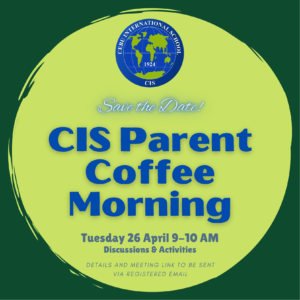
College Acceptances Update
Early Years
by Ms. Aimee Valenzona, EY Teacher and Ms. Freya Abella, EY Teacher Aide
 As we are about to end the month of March, the Early Years have started with our new unit on How the World Works. We began our unit by making use of our learning environment as our provocation to encourage student inquiry in the classroom. We started off by turning off all our lights in the classroom leaving it as dark as possible as our students came to class early in the morning. Guess what happened next?
As we are about to end the month of March, the Early Years have started with our new unit on How the World Works. We began our unit by making use of our learning environment as our provocation to encourage student inquiry in the classroom. We started off by turning off all our lights in the classroom leaving it as dark as possible as our students came to class early in the morning. Guess what happened next?
Our EY explorers demonstrated our early morning routine by getting their 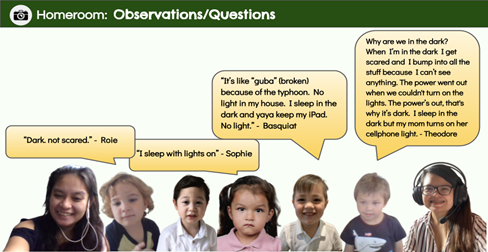 names as they come in class, removing their shoes, sanitizing, and placing their bags in their cubby holes. This routine will further develop their self-management skills as they practice and learn to show independence as they perform these daily routines. Upon entering the classroom, they noticed something different. They observed and started asking questions. Here are few of their observations/questions:
names as they come in class, removing their shoes, sanitizing, and placing their bags in their cubby holes. This routine will further develop their self-management skills as they practice and learn to show independence as they perform these daily routines. Upon entering the classroom, they noticed something different. They observed and started asking questions. Here are few of their observations/questions:
As you read through their responses and observations, you will notice how they made connections with their previous experiences at home and during the recent typhoon in Cebu last December. Being able to observe and easily connect with the world around them enables our young learners to expand their thinking and feel valued in relating learning to themselves and the real world. As we continued with this week’s engagements, students made use of their senses as they shared their observations and made an inquiry about light and the sun which led us to take note of their prior knowledge and ideas. As we continue to move forward, we will discover and learn more about how light and shadows enable us to interact with the world around us.


 As we transition to our full-day New Normal schedule, we will continue to develop our number sense by making use of math concepts such as more and less and try to explain our thinking as we solve simple problems by using counters or objects. In literacy, we are in the process of working towards finishing some of our students’ book covers while the rest will still start and/or continue with their books. Any idea what’s missing in our book covers?
As we transition to our full-day New Normal schedule, we will continue to develop our number sense by making use of math concepts such as more and less and try to explain our thinking as we solve simple problems by using counters or objects. In literacy, we are in the process of working towards finishing some of our students’ book covers while the rest will still start and/or continue with their books. Any idea what’s missing in our book covers?
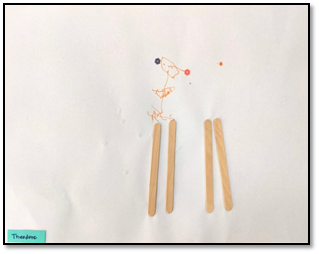

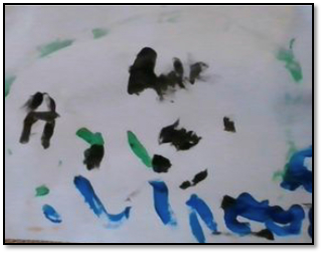
Grade 8: Science
by Christine Enrile, Science Teacher
In Quarter 3, the students explored the concepts and applications of Chemistry in society. Their summative assessment challenged them to use their understanding and skills to be able to design an eco-house which incorporated the theme of sustainability in the design and use of materials. The decision on using certain materials for their eco-house was anchored on their understanding of the changes in matter, both beneficial and harmful. In addition, developing a room layout involved integrating their knowledge and understanding of globally – accepted conservation practices in eco-house designs. Using their critical thinking and creativity, the students designed a house considering the efficient use of materials, space, and energy. These are their outputs and reflections.
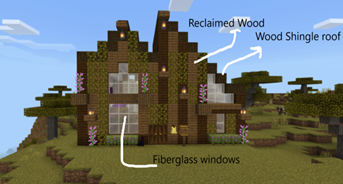
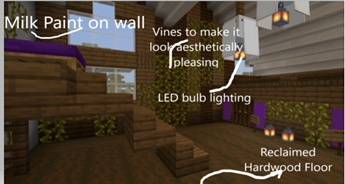
Science is effective in the decision making on whether a material can be deemed sustainable or not. Using science, one can research the components that really make a material sustainable and determine whether it is really eco-friendly or not.
Aadya

Science helps us find ways to help the environment and shows us what is harmful to our ecosystems.
Asahi

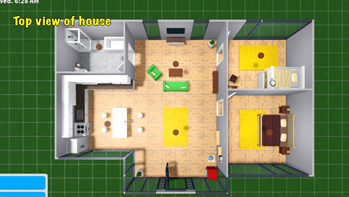
An eco-friendly home produces less carbon emissions, less energy usage, less waste going to landfills, and helps with the world’s finite resources for future construction.
Grace
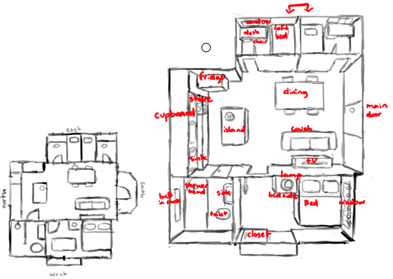
Science contributes to the development of sustainable and eco-friendly houses by identifying the benefits and disadvantages of a material that may be used in construction. Identifying these benefits and disadvantages are helpful by showing potential health and environment risks.
Kasey
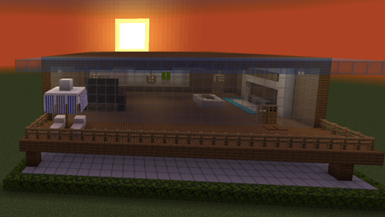
How Science contributes to the development of sustainable and eco-friendly houses is through understanding elements and what the materials are made of. With knowing the elements and consisting of materials, people will have a choice which materials they use for their house.
Ryota
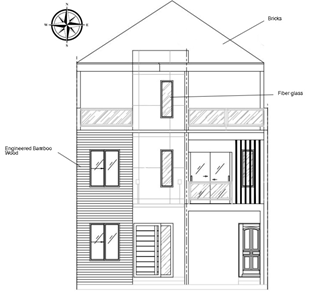
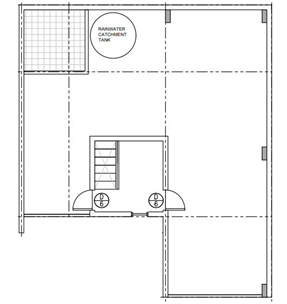
In the end, we can say that science serves as a foundation of new technologies and strategies that paved the way to new solutions such as us living sustainably. Science has enabled us to be smarter in how we make use of resources so that we can avoid total depletion of natural resources.
Sebi
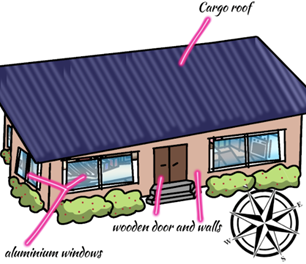

Science makes it possible to be part of the solution to help conserve our planet as we build our homes. Eco friendly houses are built with the goal of lessening the negative impact to
nature while efficiently consuming the materials and maximizing the use of space. These eco-friendly methods make our lives easier and more comfortable without destroying nature.
Rina
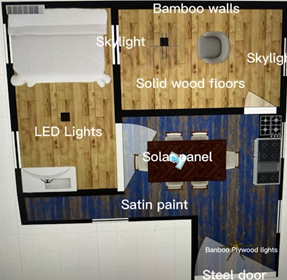
Science contributes to the development of sustainable and eco-friendly houses because science is critical when tackling complex challenges for humanity such as climate change, biodiversity loss, pollution and poverty reduction, as it lays the foundation for new approaches and solutions.
Xabi


It is also because of science that preparations can be made in order to protect certain materials from unwanted chemical reactions. There are many other eco-friendly technologies and innovations that were constructed with the help of science- such as solar energy panels, which efficiently conserve energy and absorb natural sunlight to produce power.
Grade 10: Music – Protest Song Composition
by Ms. Marie Briones, Music Teacher
The G10 wrapped up their unit on Protest Music last week with a presentation of their very own protest song composition. They were asked to compose lyrics on a simple single melody line around an issue/problem/cause of their choice such as political, social, socio-economic, etc.
Here are some of what they have to say about the whole process of composing a protest song, from their challenges and trials to triumphs of how they overcame them, from what they are most proud of about their composition to how they think they could improve it.
“What I like most about my composition/process of composing is the creation of my lyrics. I thought that I wouldn’t be able to make a good piece, but I realized that as long as I stick to the formula and have an idea of what sounds good to me, I would be able to create something good for what amounts to an amateur’s attempt at composing. Overall, I am proud of my protest song because I was able to give meaning to the lyrics…”- Zeke
Zeke – The Crisis.pdf Zeke – The Crisis.mp3
“Listening to the melody every time I finished a measure was really fun. I thought that music was just for entertainment but I realized that every music needs to have a message. Every time, music tells it directly and indirectly, just like the music we made. ”- Dennis
Dennis Composition.pdf Dennis Music.mp3
“Composing a protest song, I believe, is really being creative in the process though it also involves music theory. What I liked most about the process of composing is learning how to create a song which is the first time I have ever done. It was really fun creating the melody, the chord progression and the notes of the keys, fixing the notes/ lyrics to make it better, putting emphasis on the musical metaphors, and exploring Musescore application.” – Ron Michael
Ron Michael – Others.pdf Ron Michael – Others.wav
“The melody that I composed sounds really good compared to the number of times I tried composing. What I like most about my composition/process of composing is that we are able to think of so many outcomes and possibilities of how that music will come out. Composing is basically your own idea and knowledge put into one piece so your piece is mostly based on your creativity and imagination.” –Bryan
Bryan – Our Life.pdf Bryan – Our Life.mp3
Admissions News


Dragon’s Print
The day everyone loves yet fears: the first of April. Why’s that? Well, it’s April Fools Day! The day you can get away with pranking all your friends and family. April Fools is a Day filled with pranks everywhere, you may even hear made-up stories on the radio or read false news reports online. While the day is known by most as a day filled with silly pranks, April Fools traditions differ with varied cultures. Read more about the different April Fools traditions around the world at http://dragonsprint.cis.

College/Careers Counselor Corner
by Ms. Jenny Basa, College/Careers Counselor
Upcoming Virtual Events and Fairs: (students & parents are welcome)
DATE
April 9
Saturday
1:00PM
Link to Register
EVENT
Ritsumeikan University (Japan) : Ask us! : Why choose Ritsumeikan & What undergraduate programs are offered

April 7 & 8
Book a Slot
(BST – British Summer Time is 7 hours later than PH time)
University of Oxford (UK): Webinar Series for Parents/Guardians: These are designed to provide parents of potential Oxford applicants with all the information they need, as well as give them a chance to ask us any questions they may have.

April 4, 5, 6 and 13
4:30 – 5:30pm
Link to register
New Zealand University webinars: (in cooperation with Beacon Academy in Manila) – please refer to the schedule below:
Participating universities: University of Otago, University of Waikato, Victoria University of Wellington, Lincoln University, The University of Auckland, Massey University, University of Canterbury, Auckland University of Technology
UNIVERSITY OF OTAGO LIST OF PROGRAMS AVAILABLE: CLICK HERE
UNIVERSITY OF WAIKATO LIST OF PROGRAMS AVAILABLE: CLICK HERE

SAT Update
To register for the SAT, you may click on this link. If you need assistance or have any questions, please feel free to email Ms. Jenny Basa at jbasa@cis.edu.ph.
| 2021-2022 TEST DATES* | Registration Deadline |
| May 7, 2022 | April 8, 2022 |
| *The Optional SAT Essay and Subject Tests have been discontinued. | |





